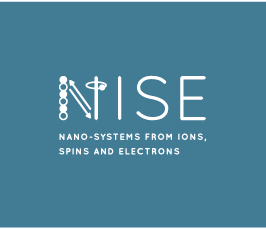Atomic scale investigation of isovalent bismuth centers in InP
- Datum: 04.07.2018
- Uhrzeit: 10:30
- Vortragende(r): Christian Krammel
- Department of Applied Physics, Eindhoven University of Technology
- Ort: Max-Planck-Institut für Mikrostrukturphysik, Weinberg 2, 06120 Halle (Saale)
- Raum: New Lecture Hall, Building B

Since the early days of semiconductor technology, defects and impurities have always played a key role. Currently, extreme combinations of conventional binary III-V semiconductors with dilute amounts of isovalent impurities which are very different from their substituents are in the focus of global scientific efforts. For example, dilute amounts of heavy Bi atoms lead in these mixed anion alloys to a significant increase in the spin-orbit splitting and an unusually strong redshift of the band gap [1,2,3]. So far, a deeper understanding of these dramatic changes in the band structure of dilute bismides is largely lacking. Cross-sectional scanning tunneling microscopy (X-STM), with its ability to correlate both structural and electronic properties at the atomic length scale, is an ideal tool for such investigations.
At first, I show at the example of Bi in InP that it is possible to image with an STM the physical deformation of the lattice by the large Bi atoms. The local strain field around the Bi atoms gives rise to characteristic signatures for Bi atoms up to two monolayers below the natural {110} cleavage planes. A straightforward geometrical model based on the covalent radii of the dopants and substrate atoms is used to interpret the observed crystal deformations. Further evidence for this hard sphere model is given by fully relaxed density functional theory (DFT) calculations.
Next, the structural properties of Bi-containing InP films are discussed. More specifically, the arrangement of the Bi atoms relative to each other is assessed. Interestingly, on the short range there is a significantly increased probability of finding Bi pairs and clusters. These deviations from an ideal alloy are not considered in current models, which are used to describe the physical properties of Bi-containing semiconductor compounds.
Finally, the influence of Bi on the local density of states (LDOS) of the host material is assessed. Depending on the tunnel conditions we are able to visualize not only the lattice distortion but also the impurity state of isovalent Bi atoms in topographic X-STM images. Complementary tight-binding calculations are used to explain the distinct anisotropy of the Bi-induced charge redistributions. In this light, the energetic structure of the Bi impurity state is investigated in scanning tunneling spectroscopy (STS) measurements. This shows that Bi gives, despite its isovalent nature, rise to a quasi-resonant state in the valence band, which shifts the band edge towards higher energies.
These results show that dilute bismides differ considerably in their structural and electronic properties from conventional III-V semiconductor alloys at the atomic level.
References:
[1] K. Wang et al., Sci. Rep. 4, 5449 (2014)
[2] K. Alberi et al., Phys. Rev. B 75, 045203 (2007)
[3] M. Polak et al., Semicond. Sci. Technol. 30, 094001 (2015)